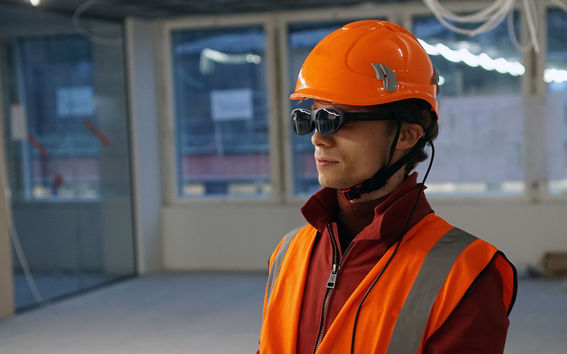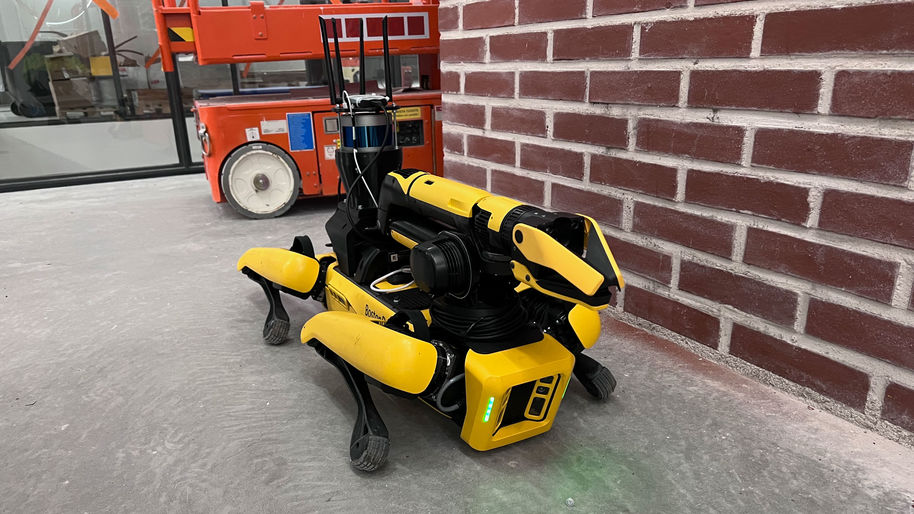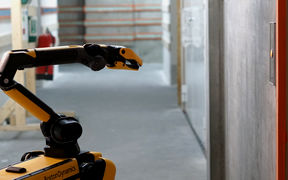ACTOR Empowers Construction Workers with Process Automation

The ACTOR project brings together six organizations to automate the collection and use of real-time data for construction management. We talked with Aalto University, Carinafour, and VTT to learn about their aspirations for the project.
ACTOR is a Finnish R&D project aiming to automate one of the most challenging tasks in construction: coordinating dozens or hundreds of participants.
The project builds on the concept of situational awareness, which enables fact-based, real-time management and planning. Those, in turn, improve productivity and shorten lead times, reducing energy consumption and waste on construction projects. For this reason, ACTOR gets support from Business Finland’s Low Carbon Built Environment Program, which in turn receives funding from the EU’s Recovery and Resilience Facility.
Building on previous research
Professor Olli Seppänen of Aalto University sheds light on the premise of ACTOR: “This project is a logical continuation of DiCtion, which provided a situational picture from the data collected from a construction site. It became clear that manually collecting and analyzing huge amounts of data for daily management was impractical. That led to the idea to automate the process.”
Aalto’s other research projects provided factual evidence of the well-known productivity dilemma. They showed how on-site workers use 70 to 80 percent of their time on activities that do not create direct value. This waste stems from poor work planning, insufficient communication, and suboptimal logistics.
The ACTOR consortium members include Aalto University, Carinafour, Flow Technologies, KONE, Trimble, and VTT Technical Research Centre of Finland. They have successfully collaborated on previous R&D projects, which has encouraged them to take up this new challenge.
Helping the worker thrive
Unlike many other research projects, ACTOR does not serve a project's managers alone. Strong emphasis is on helping the everyday needs of construction site workers.
“We are testing ideas that are not in the mainstream. Starting from the micro-level is not easy,” Seppänen admits.
He reminds us that nothing is as frustrating for a worker as a job that can’t be done because someone else has reserved the spot. This is a typical dilemma when schedules, logistics, and management are not well coordinated and communicated.
ACTOR envisions a future in which workers get automated and timely instructions on what to work on, where, and when. In addition, their jobsites are prepared and ready for work with all the necessary materials and tools at hand.
The ACTOR project brings together six organizations to automate the collection and use of real-time data for construction management. We talked with Aalto University, Carinafour, and VTT to learn about their aspirations for the project.
ACTOR is a Finnish R&D project aiming to automate one of the most challenging tasks in construction: coordinating dozens or hundreds of participants.
The project builds on the concept of situational awareness, which enables fact-based, real-time management and planning. Those, in turn, improve productivity and shorten lead times, reducing energy consumption and waste on construction projects. For this reason, ACTOR gets support from Business Finland’s Low Carbon Built Environment Program, which in turn receives funding from the EU’s Recovery and Resilience Facility.
Building on previous research
Professor Olli Seppänen of Aalto University sheds light on the premise of ACTOR: “This project is a logical continuation of DiCtion, which provided a situational picture from the data collected from a construction site. It became clear that manually collecting and analyzing huge amounts of data for daily management was impractical. That led to the idea to automate the process.”
Aalto’s other research projects provided factual evidence of the well-known productivity dilemma. They showed how on-site workers use 70 to 80 percent of their time on activities that do not create direct value. This waste stems from poor work planning, insufficient communication, and suboptimal logistics.
The ACTOR consortium members include Aalto University, Carinafour, Flow Technologies, KONE, Trimble, and VTT Technical Research Centre of Finland. They have successfully collaborated on previous R&D projects, which has encouraged them to take up this new challenge.
Helping the worker thrive
Unlike many other research projects, ACTOR does not serve a project's managers alone. Strong emphasis is on helping the everyday needs of construction site workers.
“We are testing ideas that are not in the mainstream. Starting from the micro-level is not easy,” Seppänen admits.
He reminds us that nothing is as frustrating for a worker as a job that can’t be done because someone else has reserved the spot. This is a typical dilemma when schedules, logistics, and management are not well coordinated and communicated.
ACTOR envisions a future in which workers get automated and timely instructions on what to work on, where, and when. In addition, their jobsites are prepared and ready for work with all the necessary materials and tools at hand.

Ensuring the availability of materials
Carinafour is a logistics specialist that has expanded its scope from the marine industry to the construction sector. The company’s guiding aim is to ensure the availability of materials at an optimum cost level. This is not easy to achieve in construction because the industry lacks the know-how for rigorous production management.
“The industry needs skills, understanding, and commitment to manage and carry out the required changes,” argues Ari Viitanen, the president of Carinafour.
Carinafour looks to automate material management processes as much as possible. They also research how to better manage changes in the supply chain. Carinafour uses bills of materials from BIM models, scheduled tasks from planning, and real-time data to manage material flows throughout a project’s life cycle. To do all this effectively, they use a digital platform that connects to design, scheduling, and supply chain systems.
Digitalized and systematized material management offers other benefits besides improved productivity. Carbon footprint and embedded carbon data can be calculated from product datasheets. Material flow data is also a good indicator of overall process efficiency.
“We intend to reduce variation, which has a huge impact on throughput times,” Viitanen explains.
Tools for visual management
VTT has a long history in spatial data collection and analysis. They’ve developed both immersive and augmented visualization for construction. Augmented Reality (AR) is an especially valuable technology for jobsite uses.
Mika Hakkarainen and Tatu Harviainen of VTT say that the visual management solutions they develop in ACTOR are geared to the results of a round of interviews with on-site workers.
“So far, AR solutions have been targeted at managers and designers, hardly any at workers,” says Hakkarainen.
The VTT researchers explain that they can deliver information to mobile devices, AR glasses, or displays in information kiosks and even elevators. AR can help navigate on a jobsite, provide instructions on tasks, and overlay BIM models on-site, for example.
Making it all work together
ACTOR uses a number of different technologies, like AI, image recognition, robotic data collection, simulation, BIM, and augmented reality. Each of these systems provides and requests information in a different format, making it challenging to input their data for AI and automation.
To provide a shared language and vocabulary for federated data, Aalto University has in previous projects devised an ontology that is freely available online. They intend to use and further develop it in ACTOR. Until software developers adopt the ontology, data transfer between systems requires translations that can’t be fully automated.
ACTOR’s public results will help the Finnish construction industry, but the partnering companies are looking further. They can develop products and services for non-domestic markets needing productivity solutions.
The R&D in ACTOR is groundbreaking and will undoubtedly arouse interest globally. The project has propelled doctoral dissertations and other results that Aalto and VTT hope will inspire software companies to apply ACTOR in their products.

Automatic Coordination of Construction Actors (ACTOR)
ACTOR is a Finnish R&D project aimed at increasing the productivity of construction and decrease its carbon emissions through process automation.

Read more news
Growing Materials, Growing Ideas: Inside the BioMaker Studio
At Aalto University’s BioMaker Studio, initiated by Ena Naito, students and researchers experiment with living materials, from algae to mycelium, creating an open, interdisciplinary space where design, biology, and collaboration grow together.
Your voice gives away valuable personal information, so how do you keep that data safe?
With speech technologies becoming increasingly common, researchers want to make sure we don’t give away more information than we mean to.
Aalto in 2025: Quantum leaps, creative breakthroughs and solutions for a better life
Growth, technology and industrial renewal; human-centred solutions; health and everyday wellbeing; and enjoyable daily life and thriving communities.






